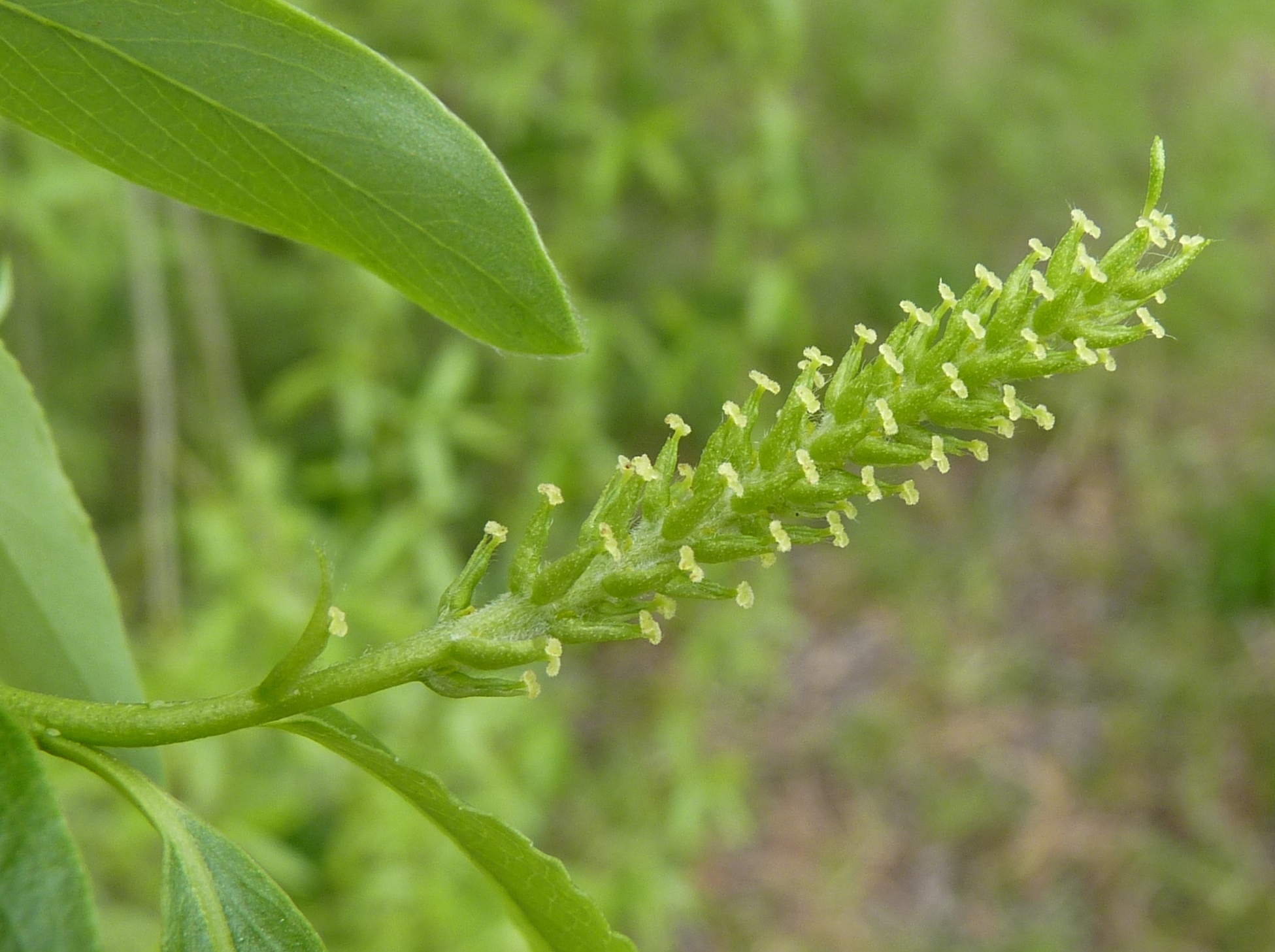
Trees or shrubs. Leaves usually deciduous, alternate, spiral or 2-ranked, usually serrate to dentate, the teeth usually salicoid (i.e., a small vein proceeding into the tooth, where it expands, the apex of the tooth being a variously coloured spherical gland or stout hair), with pinnate to palmate venation, occasionally with pellucid dots; stipules usually present. Inflorescence determinate or indeterminate, sometimes in catkins, rarely solitary. Flowers bisexual or unisexual (plants dioecious), usually subtended by a bract in Populus and Salix. Sepals 3-8, forming a disk-shaped to cup-shaped structure in Populus, but absent in Salix. Petals 3-8, distinct, or absent. Stamens 2-numerous. Carpels usually 2-4, fused; ovary superior to half-inferior, with parietal placentation. Stigmas 2-4. Ovule 1-numerous on each placenta. Nectary usually present. Fruit a loculicidal capsule, berry, or drupe; seeds often arillate or with a basal tuft of hairs.
Willows are used in basketry, medicine and tanning; poplars are a source of commercial timber. Some species of Flacourtia and Dovyalis are cultivated for their edible, fleshy fruits.
Can be recognised by their alternate, serrate, stipulate leaves that often have distinctive "salicoid teeth". Most cultivated species that were previously included in Flacourtiaceae have leaf and stipule pairs, the stipule smaller than the leaf. The flowers often have many spreading stamens and a commonly three-carpellate gynoecium with parietal placentation and either separate styles or a long, persistent style; the fruit is often a capsule. Nectary usually present.
Rarely cultivated plants include Berberidopsis Hook. f., a Berberis-like genus with 2 species, which was previously included in Flacourtiaceae, is now in its own family Berberidopsidaceae; Doyalis caffra (Hook.f. & Harv.) Hook.f., Kei Apple from South Africa is occasionally encountered in older gardens; it has long thorns and yellow juicy fruits about 1 cm wide. Specimens can be seen in Victoria at Bendigo (White Hills Bot. Gds) and Werribee Park at Werribee. Species of Xylosma G.Forst. and Scolopia Schreb. are occasionally cultivated in warmer districts.
Now includes Flacourtiaceae Rich. ex DC and Scyphostegiaceae Hutch.
About 54 genera and about 1200 species.
Pantropical, temperate to Arctic.
Source: (1997). Salicaceae. In: . Horticultural Flora of South-eastern Australia. Volume 2. Flowering plants. Dicotyledons. Part 1. The identification of garden and cultivated plants. University of New South Wales Press.
Updated by: Val Stajsic, March 2018
